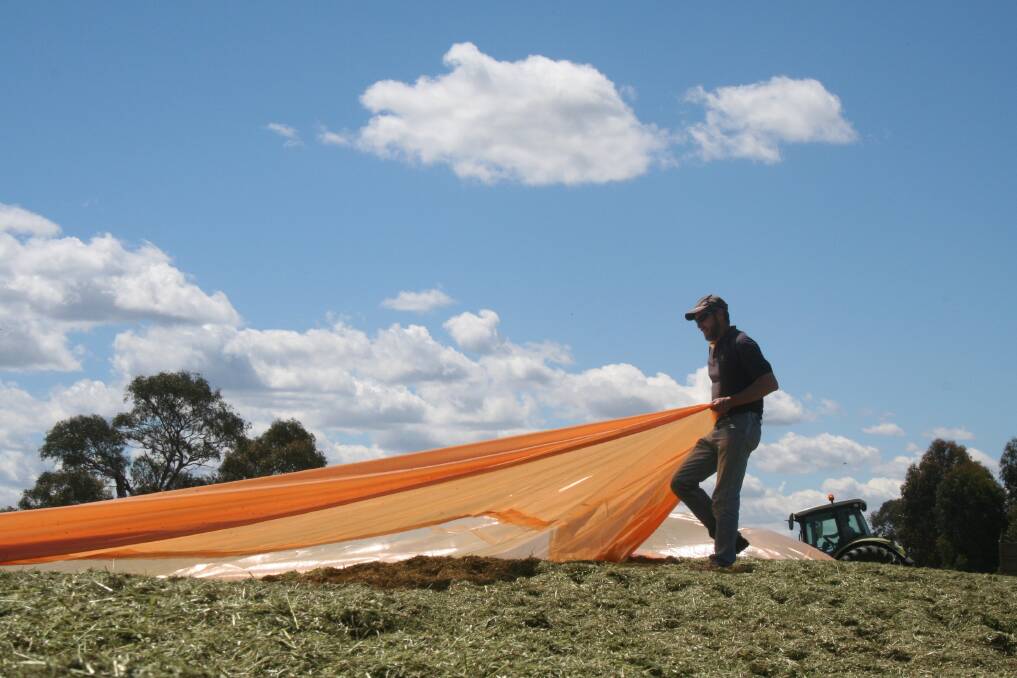Leading the silage industry

This is advertiser content for Lallemand Animal Nutrition.
LALLEMAND Animal Nutrition has been involved in the Australian livestock industry since the early 1990s and has helped customers develop forage-based feeding systems all over Australia and in parts of Asia.
Through the development of forage based feeding systems Lallemand continues to provide an integrated silage production approach along with right tools for silage production, including forage inoculants, sealing systems and management advice.
A tool that silage producers can and should use to ensure they produce, preserve and feed the largest amounts of the highest quality silage, are research proven high quality bacterial forage inoculants.
While there are numerous additives available to producers, selecting the best and most effective one for their farm should not be a difficult task.
Lallemand technical services manager David Lewis said using the right bacterial inoculant was part of an overall silage management program that would help producers achieve higher quality silages.
Selecting a suitable inoculant is about more than just managing the fermentation at silage harvest time; it's about storing and delivering high quality silage and fresh hygienic feed to animals for production at feed out as well, he said.
"Take into account your silage history and the challenges you face," Mr Lewis said.
"Generally, high protein crops present a greater fermentation challenges, while high starch crops have greater aerobic stability issues.
"Also, be aware of specific challenges due to weather - such as crop dry matter, drought, hail, crop maturity and factors such as insect damage and field disease."
Selecting a research-proven inoculant wisely and following the manufacturer's directions for storage and application will help ensure that the maximum benefits are obtained and maximise the return on investment in preserving silage, Mr Lewis said.
Lallemand offers a full range of products and services relating to silage production, management, nutrition and training.
The business is a distributor of the patented Silostop range of oxygen barrier films which are manufactured using food grade barrier and polyethylene resins.
Lallemand also has a range of conventional white and black PE silage films up to 20 metres wide which incorporates new five- and seven-layer technology, as well as woven protection covers and gravel bag sealing weights which are ideal for longer term silage storage.
It's time to grow your own silage
GROWING or contract growing your own fodder may present a better long term solution for many livestock producers, according to leading silage production consultancy, Lallemand Animal Nutrition.
David Lewis said the current drought was a compelling reminder for livestock producers to reconsider their longer term feeding strategies.
"Talking about how to prepare for dry times during a drought might seem insensitive - but now is exactly the right time for producers to consider and plan how they might be able to change their system," he said.
"Attempting to source feed when it's dry is never the best strategy because everyone is facing the same problem.
"Demand quickly outstrips supply, prices go through the roof and the quality of the remaining resource becomes variable and often geographically unfeasible to transport."
One solution is to consider producing your own silage, Mr Lewis said.
"A lot of extensive livestock producers think that feeding silage is purely in the domain of feedlots or large dairies with their own cropping programs.
"Nothing could be further from the truth.
"Silage made from irrigated or dryland crops forms the backbone of hundreds of feeding systems in dairy, beef and sheep enterprises throughout Australia.
"Livestock producers are using baled silage through to large bulk silage systems.
"It really comes down to developing a silage system that meets the needs of each situation from production through to drought reserves."
Lallemand has five regionally- based technical consultants in regional Australia that cover all states who work with hundreds of dairy, beef and sheep producers.
"Some of our customers use silage to maximise the performance of their breeding herd through to intensive production systems for milk and meat and as reserves to sustain production or hold their precious genetic base during bad years to limit destocking," Mr Lewis said.
"Some are using silage in their weaning programs to make sure heifers and mature breeders achieve critical mating weights and body condition scores, respectively, which can have a positive impact on the lifelong profitability of your herd.
"Many beef producers are increasingly using silage in their backgrounding or finishing programs to make sure their steers achieve market specifications and leave the property on time.
"Alternatively, it can be put away and used as a drought management strategy.
"Although the majority of silage produced nowadays is consumed within 12 to 18 months, many people forget that silage can be stored for 10, 20 or even 30 years."
This is advertiser content for Lallemand Animal Nutrition.


